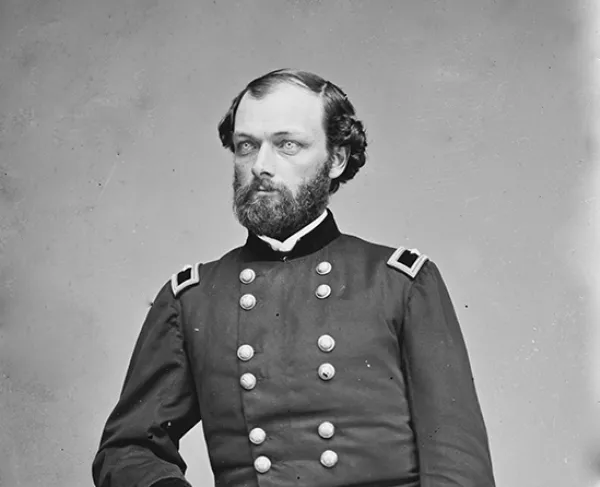Quincy A. Gillmore

Quincy Adams Gillmore began his career after graduating first in his class at the United States Military Academy in 1849. He was commissioned into the Corps of Engineers and taught briefly at West Point. At the outbreak of the Civil War, Gillmore was placed on the staff of General Thomas W. Sherman, and first saw service during the Union Army’s Port Royal expedition. He became very well known for taking part in the Siege of Fort Pulaski. During the siege, Gillmore advocated the use of rifled naval guns, and was able to effectively breach the mason walls of the fort with the new technology. Gillmore’s actions at Fort Pulaski effectively brought an end to the use of large masonry forts. He was promoted to brigadier general on April 28, 1862, and then to major general on July 10, 1863. He was placed in charge of the Department of the South as well as the X Corps, and commanded these troops during the campaign to recapture Fort Sumter during the summer of 1863. It was during this time that Gillmore commanded the capture of Batteries Wagner and Gregg, using African-American soldiers. In May of 1864, he was transferred to the Army of the James and took part in the Bermuda Hundred operations. On July 11, 1864, Gillmore was crucial in helping raise units in and around Washington, DC when Confederate General Jubal A. Early threatened the city. On March 13, 1865, he was promoted to major general and served until the end of the war.





